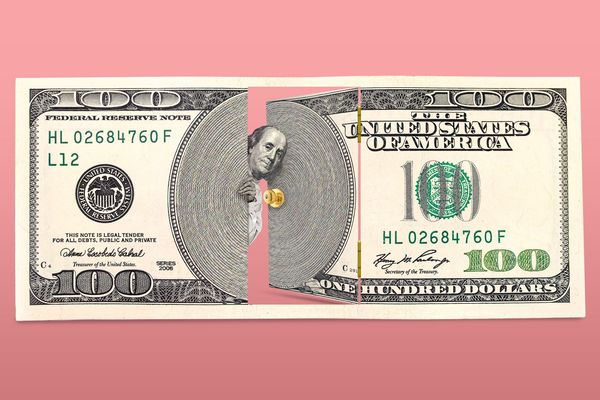Turns out there is a perk to getting older: catch-up contributions.
Not everyone in the run-up to retirement has a nest egg big enough to brag about. Many aren't even on track to meet a savings target. And few are anywhere close to the $1.8 million that 401(k) investors surveyed by Charles Schwab think they'll need to save for retirement.
But workers 50 or older with a skimpy 401(k) can revive their retirement dreams. The secret to a comeback? Adding catch-up contributions to their retirement-savings playbook.
"It's never too late to save for retirement," said Kelly LaVigne, vice president of consumer insights for Allianz Life Insurance Company of North America.
So, don't give up on saving. Every dollar counts — even if the deposits come later in your work life.
"Many people are behind on retirement, but that doesn't mean it's hopeless," said Brian Walsh, head of financial planning at SoFi. "Maxing out catch-up contributions could substantially sway your situation."
Catch-Up Contributions Pack A Punch
Saving more via catch-up contributions delivers a one-two punch. It's a way to boost retirement account balances as well as benefit more from tax-advantaged savings.
For 2023 and 2024, those aged 50 or older can contribute an additional $7,500 to their 401(k). In traditional 401(k)s, those catch-up contributions are made with pretax dollars, which also lowers your taxable income.
"The real advantage to the catch-up contribution is it gives those closest to retirement a chance to make up for maybe not having saved as much during their earlier working years," said Tim Steffen, director of advanced planning for Baird, a money management firm. It can also help replace any account value losses due to a market decline close to retirement, he adds.
Having to play catch-up is pretty typical. Many factors can cause savings shortages. Common culprits include job loss, lack of free cash to put toward savings, or having to prioritize large expenses like a mortgage, college tuition or weddings.
Those are just a few reasons why many savers are unable to sock away 15% of their annual income for retirement that financial experts recommend.
How many 401(k) savers take advantage of catch-up contributions?
Despite the benefits of making catch-up contributions, only 16% of eligible participants of 401(k) plans offered by Vanguard took advantage of this feature in 2022, says Vanguard. And the lion's share of savers who did were high earners. In fact, 20% of 401(k) participants who earn between $100,000 and $149,999 made catch-up contributions last year, as did 56% of plan participants with income of more than $150,000, Vanguard says.
Socking money away, of course, is more challenging for those who earn less. Only 2% of workers with 401(k)s who earned between $50,000 and $74,999 made catch-up contributions in 2022. And just 5% earning between $75,000 and $99,999 did so.
Catch-Up Contributions Can Narrow The Savings Gap
Many savers think there's not enough time for catch-up contributions to make a difference in their account balance. But the evidence suggests otherwise.
A T. Rowe Price analysis drove home the benefits of the "catch-up effect" and the power of compounding over a 10- to 15-year period. It looked at two investors, Julie and Jim. Both are age 49. And each earn $160,000 a year, max out their 401(k)s, and had $600,000 saved in their respective 401(k)s.
At age 50, only Julie takes advantage of the catch-up contribution. She saves an additional $7,500 a year. By the time they both turned 65, Julie could have saved an additional $202,000 for retirement, assuming a 7% annual return. That's roughly 9% more in total savings than Jim, who didn't take advantage of catch-up contributions.
"You can definitely use this extra savings window to really accelerate your retirement savings," said Steffen. "For people who have struggled to save prior to age 50, this catch-up contribution can be a real lifeline."
The benefits of socking away more money in a tax-deferred account will pay off even more if you live a long life in retirement. "Let's say you live to 90, you're going to get the power of compounding all those extra years," said Eric W. Bond, president of Bond Wealth Management.
He recommends that savers ask their accountant at tax time how much more they will pay in taxes by not making catch-up contributions. Bond also says it's a mistake for people sitting on a lot of cash not to use the idle money to make a catch-up contribution.
How To Free Up Funds To Play Catch-Up
But like any savings plan, it's not always easy to come up with the extra money. The key is to find the extra funds somewhere in your budget to put toward your catch-up contribution.
"If you can't afford to put more money away for retirement, then you're going to be looking at ways to cut down expenses," said LaVigne.
That could mean cutting back on discretionary purchases, finding a less expensive car to drive or house to live in or sticking to your budget, he says.
Another strategy to consider: Earmark money no longer needed to fund prior goals, such as college tuition or a paid-off mortgage, for your catch-up contributions. You might also consider using a raise or an annual bonus as a funding source for your 401(k) catch-up deposits.
The ability to make catch-up contributions may also be easier for people who no longer must support their adult children, says SoFi's Walsh.
"As families transition from the higher expenses of children in the house to an empty nest, the extra cash flow can speed up your (retirement savings) progress," said Walsh.
Find Novel Ways To Contribute More
There are other ways folks on tight budgets can free up cash to make a catch-up contribution.
Try setting up automatic contribution increases. Automating your savings will improve your odds of success, says Walsh. Each year, when you set up your retirement plan contributions, set up annual increases of 1% or 2%.
Cut subscriptions you don't need. Merchants love recurring revenues like subscription services. But it's more costly signing up for streaming services, gym memberships and other monthly subscriptions than you might think. "That $9.99 per month seems so minor," said Walsh. "But when you look at all your recurring subscription expenses, it might add up to a substantial portion of your budget. Taking a deliberate look at your recurring expenses can lead to big savings."
Catch-Up Contributions Are Possible
You might be surprised at cash you free up if you wait before spending money. To avoid impulse spending, implement a mandatory "wait period" before you buy anything that you don't necessarily need. "Take 24 hours, although 48 hours might be better," said Walsh. "You'll likely be shocked — and relieved — at how many purchases you're ultimately happy that you didn't make."
Consider spending freezes, too. Like a diet, a spending freeze can be hard to stick to. Instead, pick one spending category a month to reap savings. For example, take a month off from eating out. The next month maybe cut out attendance at sporting events. And the month after that maybe cut out trips to the mall. "Treat it as a game or challenge," said Walsh.
And there's nothing to say that you need to max out your catch-up contribution, either, adds Bond. Any size deposit each year is better than none. "It's not all or nothing," Bond said. "The government has given us this (savings) gift, so if you can, you should at least try to take advantage of it."










